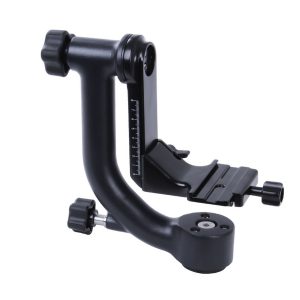Ever wondered how photographers manage to get those amazing pictures of birds in flight, and animals running – razor sharp? After all, lenses of 300mm and longer are difficult to use even shooting stationary subjects! The answer lies in using a tripod of course, but not just any tripod…
The usual tripods that we use have two adjusting levers – one for a pan movement, and one for a tilt up and down movement and lock. While this is a sturdy and dependable system for most applications, it is not the most convenient for wildlife. Imagine fiddling with these levers while trying to track a bird in flight in your viewfinder – it just wouldn’t work! A ball head tripod would work much better, since it has just one adjusting control. But then again, lenses used for professional wildlife are usually heavy and long, and a regular tripod head in most cases would be difficult to adjust.
The ‘Gymbal tripod head solves the problem. It is an arc-like attachment which mounts the lens, allowing for easy maneuverability in all directions while affixed to the tripod. It can be locked and released with one single adjustment. The Gymbal is a pleasure to use once you get the hang of it.

A few other things you need to keep in mind shooting wildlife – use high shutter speeds, period! Wildlife photographers often use speeds as high as 1/2000 sec or more. This understandably means you’d also be using a really high ISO in most conditions, which in turn depends largely on the sensor performance.

Tracking a bird in flight would probably be the biggest challenge, and that is something that can only come with practice. But do keep in mind – set your camera controls given the ambient light conditions, mount your gear on a tripod and be ready to fire before you start panning your subject…